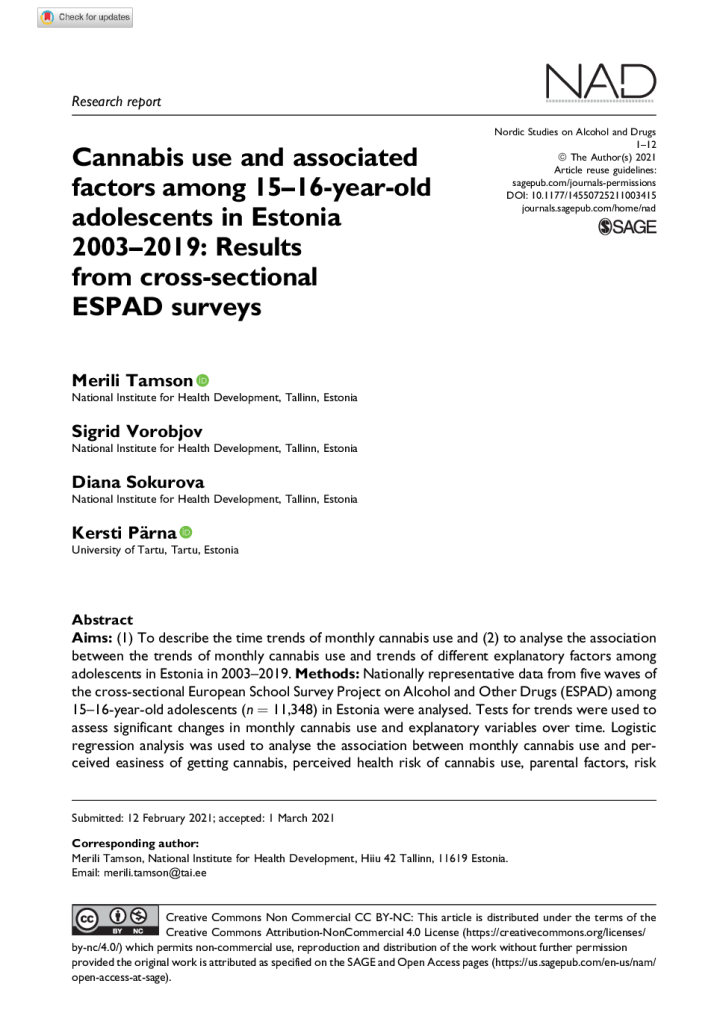Cannabis use and associated factors among 15–16-year-old adolescents in Estonia 2003–2019: Results from cross-sectional ESPAD surveys.
Abstract
Aims
(1) To describe the time trends of monthly cannabis use and (2) to analyse the association between the trends of monthly cannabis use and trends of different explanatory factors among adolescents in Estonia in 2003–2019.
Methods
Nationally representative data from five waves of the cross-sectional European School Survey Project on Alcohol and Other Drugs (ESPAD) among 15–16-year-old adolescents (n = 11,348) in Estonia were analysed. Tests for trends were used to assess significant changes in monthly cannabis use and explanatory variables over time. Logistic regression analysis was used to analyse the association between monthly cannabis use and perceived easiness of getting cannabis, perceived health risk of cannabis use, parental factors, risk behaviours, and leisure time activities. The model included interaction terms between the study year and each explanatory variable. Gender-adjusted odds ratios (OR) with 95% confidence intervals (CI) were calculated.
Results
Monthly cannabis use increased from 5.3% in 2003 to 7.7% in 2015 and thereafter decreased to 6.6% in 2019 among adolescents in Estonia (P = 0.007). The association between monthly cannabis use and alcohol use was significant over the study period and the interaction of alcohol use with study year indicated significantly increased effect of alcohol use over time (P = 0.038). The association between monthly cannabis use and perceived easiness of obtaining cannabis, perceived low health risk from cannabis use and smoking was significant, but remained unchanged over the study period. The relationship between monthly cannabis use and low parental control was significant in two last study years but did not show any changes over time.
Keywords: adolescents, availability, cannabis, ESPAD, Estonia, harm, prevention, substance use
